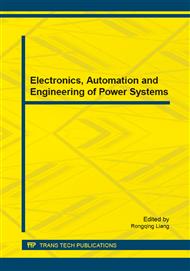p.755
p.759
p.771
p.775
p.781
p.787
p.791
p.796
p.805
Short-Term Output Forecasting Model of Photovoltaic Electric Field Based on Wavelet Transform
Abstract:
As the meteorological parameter of numeric weather forecast model has systematic error, which leads to the restriction of forecast precision for photovoltaic electric field, the paper put forward a short-term output forecasting model of photovoltaic electric field based on wavelet transform. Wavelet transform algorithm that using 4 series of sym6 wavelet decomposition conducts a dynamic correction to the wind speed data outputted by numerical weather forecasting. Through combining other meteorological data, it formed a new amended meteorological data collection used to forecast the photovoltaic power; according to the two training set of both the original and the amended meteorological data, two prediction model based on original and amended neural network outputted by photovoltaic plant power are established. By comparing the measured data and model analysis data within a same period, it shows that the amended model can significantly reduce the RMSE of predict results and decrease the error from 70.66% to 70.66%, and increase the relative accuracy from 70.66% to 70.66%.
Info:
Periodical:
Pages:
781-786
Citation:
Online since:
February 2015
Price:
Сopyright:
© 2015 Trans Tech Publications Ltd. All Rights Reserved
Share:
Citation:


